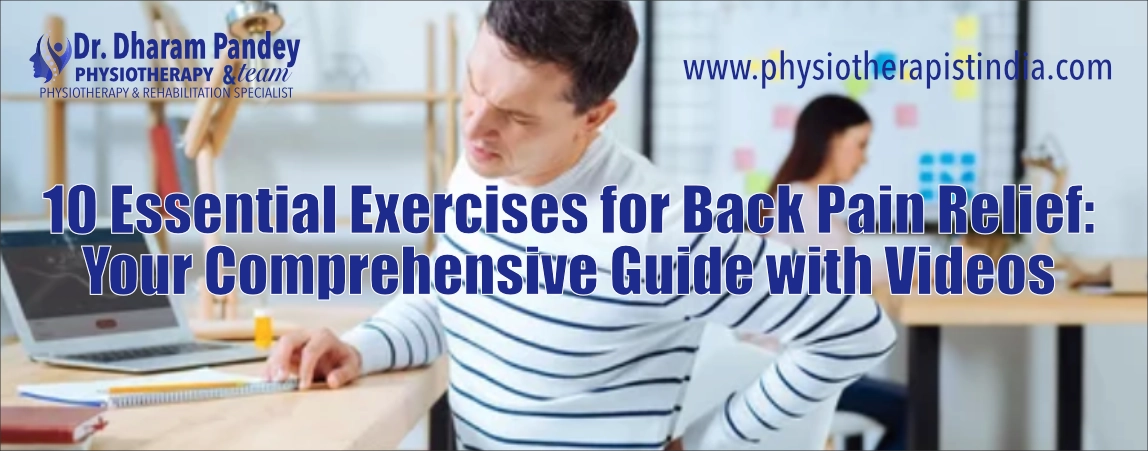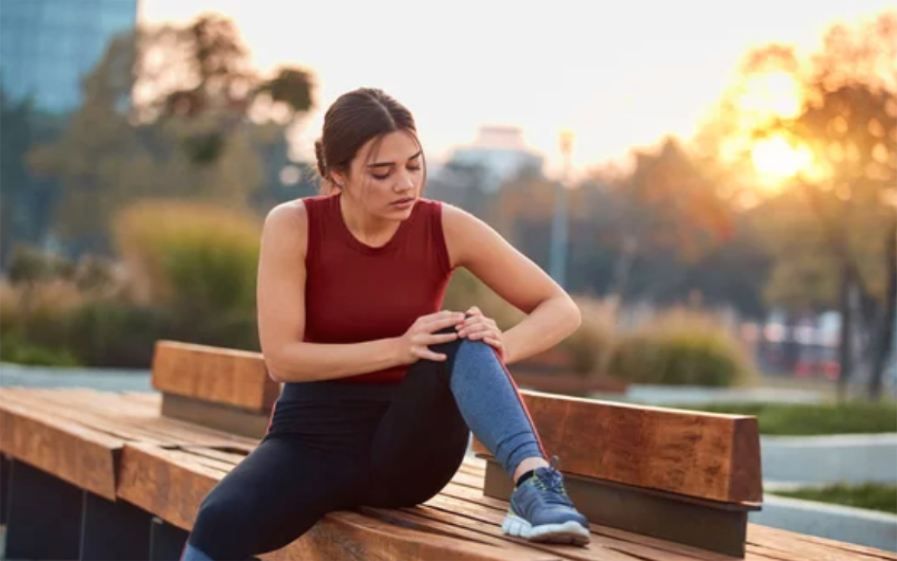WHAT WE TREAT
Chondromalacia Patella Physiotherapy
Best Physiotherapist in Delhi
Explore Chondromalacia Patella, a condition causing knee pain and discomfort. Learn about its causes, symptoms, diagnosis, and effective management techniques, including exercises to strengthen your knees and prevent further issues.
Understanding, Managing, and Strengthening Your Knees
Chondromalacia Patella, a condition that can cause knee pain and discomfort, let’s discuss the world of Chondromalacia Patella, understand its causes, symptoms, and diagnosis, and explore effective management techniques, including exercises to strengthen your knees and prevent further issues.
Demystifying Chondromalacia Patella
Chondromalacia Patella is a condition in which the cartilage beneath the kneecap (patella) softens and breaks down. It can lead to pain, particularly when bending the knee.

Causes of Chondromalacia Patella
Examine the various causes of Chondromalacia Patella, including:
- Overuse and Repetitive Stress: Frequent bending and straightening of the knee, common in activities like running and jumping, can lead to this condition.
- Muscle Imbalances: Weakness or imbalances in the muscles surrounding the knee can affect patellar alignment and contribute to Chondromalacia Patella.
- Trauma or Injury: Direct injury to the kneecap or a fall can damage the cartilage.
Symptoms and Diagnosis
Recognizing the symptoms of Chondromalacia Patella is essential for early diagnosis. Common symptoms include:
- Pain when climbing stairs or after sitting for extended periods.
- A grinding or cracking sensation in the knee.
- Swelling or inflammation around the patella.
Diagnosing Chondromalacia Patella typically involves physical examination, imaging studies like X-rays or MRI, and possibly arthroscopy for a direct view of the knee’s condition.
Managing Chondromalacia Patella
Effective management techniques for Chondromalacia Patella include:
- Rest and Activity Modification: Reducing activities that exacerbate knee pain and allowing the knee to rest is often the first step in management.
- Pain Relief: Over-the-counter pain relievers and anti-inflammatory medications can help alleviate discomfort.
- Physical Therapy: Physical therapists can provide exercises and techniques to strengthen the muscles around the knee, improve alignment, and reduce pain.
- Orthotics and Bracing: Custom orthotic inserts and knee braces can provide support and reduce stress on the kneecap.
Strengthening Exercises for Chondromalacia Patella
Explore a range of exercises that can help strengthen the knee and alleviate symptoms:
- Quad Sets: These exercises target the quadriceps muscles, which play a crucial role in patellar alignment.
- Straight Leg Raises: Focusing on the quadriceps, these exercises help improve muscle strength and support for the knee.
- Clamshells: These exercises target the hip muscles, helping to improve overall lower body alignment.
- Step-Ups: Step-ups strengthen the quadriceps and help with weight-bearing and control of knee movement.
Lifestyle Adjustments
Making lifestyle adjustments can complement treatment and improve knee health:
- Proper Footwear: Wearing well-fitted, supportive footwear can help with proper alignment.
- Warm-Up and Stretching: Warming up before exercise and incorporating stretches can reduce the risk of overuse.
- Weight Management: Maintaining a healthy weight can reduce the strain on the knee joint.
- Hydration and Nutrition: Staying well-hydrated and maintaining a balanced diet can support overall joint health.
Prevention Strategies
To prevent Chondromalacia Patella, consider these strategies:
- Proper Exercise Techniques: Using proper form and technique during exercise can reduce the risk of knee strain.
- Gradual Progression: Gradually increasing the intensity of exercise and avoiding overexertion can prevent overuse injuries.
- Listen to Your Body: Paying attention to early signs of discomfort and taking breaks when needed is crucial for prevention.
- Regular Check-Ups: Periodic check-ups with a healthcare professional can identify and address issues before they become chronic.
Role of Laser Therapy in Chondromalacia Patella Management
Explore how laser therapy can benefit individuals with Chondromalacia Patella:
- Reduced Inflammation: Laser therapy can reduce inflammation in the knee joint, alleviating pain and discomfort.
- Enhanced Tissue Repair: By promoting cell regeneration and tissue repair, laser therapy can aid in the healing of damaged cartilage beneath the patella.
- Improved Blood Flow: Laser therapy enhances blood circulation, supplying essential nutrients to the affected area and expediting the healing process.
Understanding Manual Therapy
Manual therapy encompasses various hands-on techniques performed by skilled therapists to assess, diagnose, and treat musculoskeletal and neuromuscular conditions. In the context of Chondromalacia Patella, manual therapy focuses on improving knee joint mobility and muscle function.
Role of Manual Therapy in Chondromalacia Patella Management
Discover how manual therapy contributes to Chondromalacia Patella management:
- Improved Joint Mobility: Manual therapy techniques can enhance the range of motion in the knee joint, reducing stiffness and pain.
- Muscle Balancing: Skilled therapists can address muscle imbalances around the knee, which can contribute to Chondromalacia Patella.
- Patellar Alignment: Manual therapy can help ensure proper patellar alignment, reducing the risk of cartilage wear and tear.
Synergy of Laser and Manual Therapy
When laser therapy and manual therapy are combined:
- Comprehensive Pain Relief: Laser therapy reduces inflammation and promotes tissue repair, while manual therapy improves joint mobility and muscle function. This synergy offers comprehensive pain relief.
- Enhanced Healing: Laser therapy accelerates healing at the cellular level, while manual therapy addresses mechanical issues. This combined approach leads to faster recovery.
- Optimal Knee Health: The collaboration of both therapies ensures that patients not only find relief but also achieve better overall knee health, reducing the risk of future issues.
Laser and Manual Therapy Sessions
These sessions typically involve:
- Assessment: A thorough evaluation of the individual’s condition and knee health.
- Customized Treatment Plan: Based on the assessment, a tailored treatment plan is created, considering the specific needs of the patient.
- Sequential Treatment: Sessions often alternate between laser therapy and manual therapy, addressing both the cellular and mechanical aspects of Chondromalacia Patella.
- Progress Monitoring: Therapists monitor progress and make adjustments as necessary to optimize results.
Collaborative Approach and Professional Guidance
In some cases, a collaborative approach may involve working with other healthcare professionals, such as orthopedic specialists or physical therapists, to create a well-rounded Chondromalacia Patella management plan. Professional guidance ensures the most effective treatment.


Cutting-Edge Technology
Our commitment to using the best technology extends to various aspects of physiotherapy:
- Robotic Assistance: We employ robotics for gait training, aiding patients with mobility impairments. These devices facilitate improved motor control and muscle activation.
- Electrotherapy: Techniques like TENS, IFT, and Ultrasound Therapy are used to target pain relief and accelerate tissue healing.
- Virtual Reality (VR): We utilize VR and interactive gaming for engaging and enjoyable rehabilitation, increasing patient motivation and compliance with treatment.
Frequently Asked Questions
Reach out to us if you have further Questions - We're here to help!
FAQs About Chondromalacia Patella
Q1: Is Chondromalacia Patella a permanent condition?
A1: Chondromalacia Patella can often be managed effectively with appropriate treatment and lifestyle adjustments, leading to symptom relief and improved knee health.
Q2: Can Chondromalacia Patella affect both knees?
A2: Yes, Chondromalacia Patella can affect one or both knees, and the severity may vary.
Q3: Are there surgical options for severe Chondromalacia Patella?
A3: In some cases, surgery may be considered for severe or refractory Chondromalacia Patella. Surgical procedures may involve smoothing the damaged cartilage or realigning the patella.
Q4: Can Chondromalacia Patella recur after successful treatment?
A4: While it can recur, especially with inadequate follow-through on exercises and lifestyle adjustments, diligent prevention strategies can reduce the risk of recurrence.
Q5: Is running advisable for individuals with Chondromalacia Patella?
A5: Running may be feasible for some individuals with Chondromalacia Patella, but it should be discussed with a healthcare professional. Proper footwear and gradual progression are essential.
Chondromalacia Patella can be a source of knee pain and discomfort, but with a thorough understanding of its causes, symptoms, and effective management techniques, individuals can alleviate discomfort and promote better knee health. Implementing strengthening exercises and lifestyle adjustments, as well as practicing prevention strategies, can contribute to long-term knee wellness. If you suspect you have Chondromalacia Patella, seeking professional medical advice for proper diagnosis and personalized treatment is crucial.
FAQs LASER therapy and Manual Therapy for Chondromalacia Patella
Q1: Is laser therapy painful for Chondromalacia Patella?
A1: Laser therapy is generally painless and non-invasive. Patients often experience a soothing warmth during the treatment.
Q2: How many combined therapy sessions are typically required for Chondromalacia Patella?
A2: The number of sessions varies based on the severity of the condition and individual response to treatment. A customized treatment plan is recommended.
Q3: Are there side effects associated with laser and manual therapy?
A3: Side effects are rare and are typically mild, such as temporary soreness. However, patients should discuss any concerns with their therapists.
Q4: Can laser therapy and manual therapy prevent the recurrence of Chondromalacia Patella?
A4: The combined approach can contribute to better knee health and reduce the risk of recurrence. It’s essential to maintain good knee practices and seek professional guidance when needed.
Q5: Is the combined therapy suitable for chronic Chondromalacia Patella?
A5: Yes, the combined therapy approach can be effective for both acute and chronic cases of Chondromalacia Patella, providing relief and promoting long-term knee wellness.
The combination of laser therapy and manual therapy offers a comprehensive solution for Chondromalacia Patella, addressing both the cellular and mechanical aspects of the condition. This synergistic approach provides effective pain
Have Questions or Need Assistance?
Don’t hesitate to reach out to us:
Book Appointment with Experts
- Call/WhatsApp: +9818911195
- Book Appointment with Experts
We are here to lend our support on your journey toward improved movement and overall well-being.
See all Blogs & Articles
See all Conditions we Treat
Note: Content provided here is for informational purposes only and is not a substitute for professional medical advice or diagnosis. If you believe you are experiencing pain or any other health-related issue, it is important to seek the advice of qualified healthcare professionals for a proper evaluation and treatment plan.









